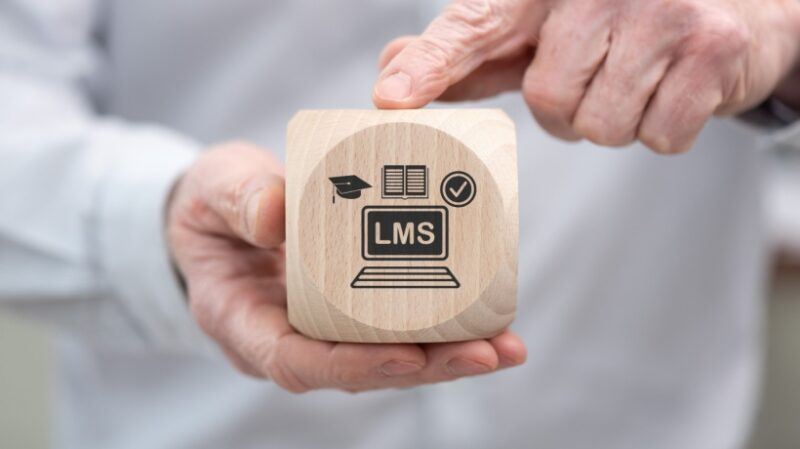
Associations Need A Specialized LMS
In 1953, the American Society of Association Executives (ASAE) reported that membership dues contributed 96% of an association’s revenue. However, by 2016, that figure had dropped to just 45% for trade associations and 30% for professional associations. This decline highlights the growing importance of non-dues revenue sources, particularly those from continuing education and training programs. According to a 2017 Association Adviser poll, learning programs now contribute nearly 25% of non-dues revenue for associations.
As the landscape shifts, associations face a critical question: how can they offer more valuable education to more people and generate more revenue to fund expansion? The answer lies in adopting modern online learning platforms, particularly a Learning Management System (LMS) designed specifically for associations. Here are four reasons that make purchasing a specialist LMS essential.
Reasons To Purchase A Specialized LMS
1. Increased Revenue Streams
Lifelong learning is more vital than ever. According to a 2015 Pew Research study, 63% of American adults participate in professional development, and 74% of adults in the country are dedicated to lifelong learning. Associations are well-positioned to meet this demand with a variety of online learning programs, including online courses, webinars, and virtual meetings.
A specialized LMS simplifies the delivery and tracking of these educational offerings, enabling associations to provide a comprehensive learning experience. By leveraging a robust LMS, associations can offer diverse training programs, attract more participants, and tap into new revenue streams.
2. Sustainable Membership Growth
Education is a key benefit that attracts new members and retains existing ones. An LMS serves as a powerful tool for personalized marketing, helping associations engage members more effectively. By offering tailored online learning experiences, associations can enhance member satisfaction and loyalty.
Moreover, an LMS enables associations to reach a broader audience by providing on-demand, multi-language resources. This expansion beyond geographic boundaries not only boosts member engagement but also helps associations attract new members from different regions, driving sustainable growth.
3. Reduced Operational Costs
The rise of online learning has made it easier and more cost-effective for associations to deliver educational content. An LMS allows associations to develop course materials once and distribute them across multiple channels, reducing content creation and administrative costs.
By offering online learning through an LMS, associations can eliminate the need for costly in-person events and travel expenses. Members can access learning programs anytime, anywhere, on any device. The savings generated from this approach can be reinvested in developing new training programs, further enhancing the association’s offerings.
4. Streamlined Certification And Accreditation Processes
Managing professional certifications and credentials can be complex, especially with varying state regulations. A specialized LMS provides a centralized platform for members to track their continuing education requirements, manage credentials, and access relevant information.
For associations offering certification and accreditation services, an LMS automates administrative tasks, reducing the burden on the Learning and Development team. This streamlined process not only improves efficiency but also enhances the member experience, reinforcing the association’s value as a provider of professional development.
Strategic Considerations Before Investing In An LMS
Before selecting a new LMS, it’s crucial to take a strategic approach:
- Clarify your learning strategy
Ensure that your LMS aligns with your association’s overall mission and goals. - Consider your ecosystem
Your LMS should integrate seamlessly with other systems, such as association management systems and content development tools. - Calculate Return On Investment (ROI)
Assess the potential ROI by considering both tangible and intangible benefits, such as increased member engagement and reduced administrative costs. - Plan for change management
Anticipate resistance to new technology and prepare for effective communication and training to ensure successful adoption.
Enhancing Member Engagement
In addition to providing educational resources, a tailored LMS encourages more in-depth engagement from members. By offering personalized learning paths, interactive elements, and social learning features, an LMS creates a more immersive experience, encouraging members to stay active, participate more, and derive greater value from their association membership.
Conclusion
Investing in a specialized LMS is a strategic move that can significantly enhance an association’s ability to deliver high-quality online learning programs. By leveraging the power of an LMS, associations can tap into new revenue streams, drive sustainable membership growth, reduce operational costs, and streamline certification processes. In an era where continuing education is increasingly crucial, a specialized association LMS is not just a tool; it’s a key to the future success of all the member-based organizations, not only the associations.
Further Reading:
Editor’s Note: Check out our directory to find, choose, and compare eLearning Industry’s Top LMS Software.

